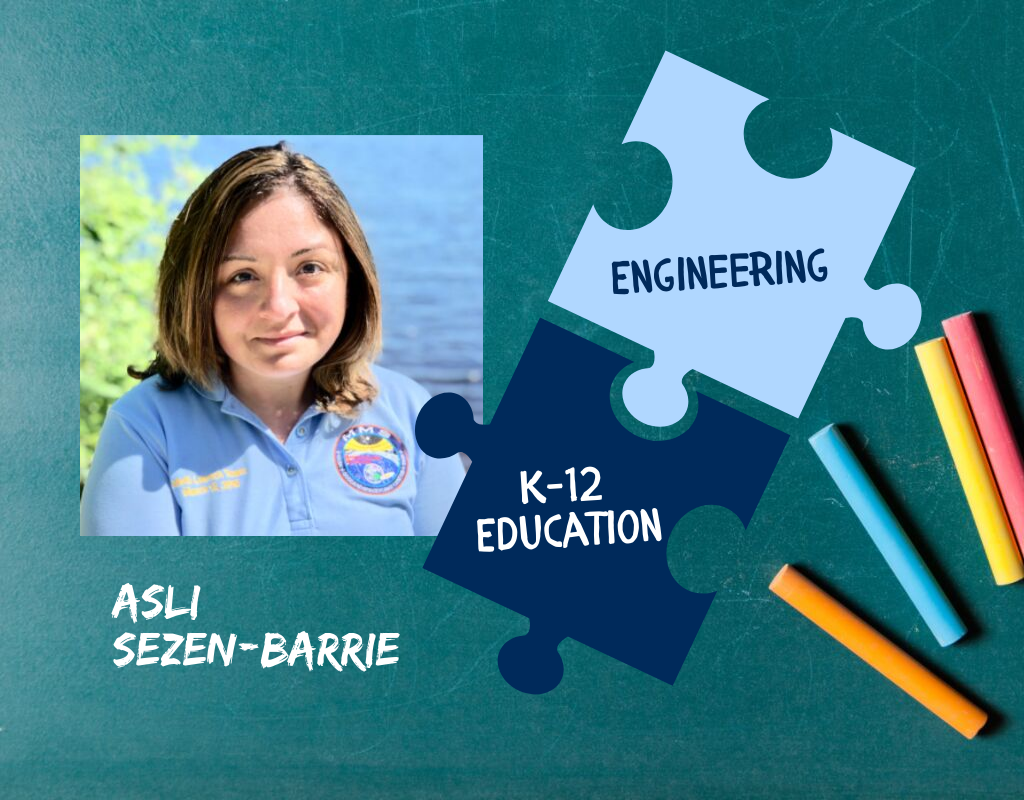
Piecing together engineering puzzle for K-12 educators
Children are born with an innate interest in engineering. As they play, they learn how to stack blocks higher into new shapes or structures, or construct race tracks to give their toy cars enough speed to fly through plastic loops. Children enjoy innovating and problem solving, but how can that interest be fostered in the classroom environment?
Maine recently adopted the Next Generation Science Standards requiring engineering education to be included in K-12 curricula. But, as students, children have a limited idea of what engineering is— and how it can be applied in their future.
When asked, many students may relate engineering to the programs and exposure they have at school, such as after-school clubs featuring robotics learning or computer coding. But without formal learning in the classroom, students are missing important opportunities to discover more.
One reason to explain the gap between after school activities and effective in-class curriculum is that teachers themselves have limited conceptions of engineering.
Asli Sezen-Barrie is an assistant professor of curriculum, assessment and instruction at the University of Maine’s College of Education and Human Development. She says that many K-12 educators are not prepared to teach engineering concepts in their classrooms.
But she hopes her research can help build stronger pre-service programs that include the engineering education piece for future educators here in Maine by focusing on teachers first.
Starting with educators, first
So, how do teachers conceptualize what engineering is? This is one of the big questions Sezen-Barrie hopes to answer through her research.
“A good first step for me is to really explore how teachers right now are conceptualizing [engineering] and what their resources are, what their limits [in understanding] are, what the areas that need to improve are, and what [engineering] looks like in a classroom environment,” says Sezen-Barrie.
Many teachers do not receive direct engineering teaching practices in their professional training before entering their classrooms, and because of this, they may not have a complete understanding of what work in the engineering field looks like, or even who could possess the qualities of becoming an engineer in the future.
For example, one teacher’s perceptions may equate engineering work with coding. But how many other types of engineering are there, that this teacher may be unaware of, and therefore does not include in their classroom curricula?
“Coding is important and dealing with the big data is important,” says Sezen-Barrie. “But if you think about what kind of engineering exists in Maine, or in rural communities, there is manufacturing of lightweight materials, forestry engineering, marine engineering, work to make buildings more efficient…”
One main role for teachers in K-12 classrooms is to help their students connect the lessons they learn in the classroom to their everyday life. For Maine students in particular, who may have parents who work in the lobster fishing or lumber industry, a connection between engineering and lobster trap building, or between engineering and forestry management would directly connect students’ everyday life to a deeper understanding of engineering and STEM in the classroom.
Direct connections and real life applications help students themselves also conceptualize what engineering looks like.
But what happens when students go to college for engineering, and it’s not what they expected?
“Engineering is one of the fields that has a [high] dropout rate, and one thing in relation to that… is that oftentimes when [students] choose engineering for their college degrees, they don’t quite understand the interdisciplinary nature of engineering,” says Sezen-Barrie. “So when students come and take courses from various fields, they [ask] – why am I even taking these courses?”
Putting the pieces of the puzzle together, with a little help from UMaine Research
Sezen-Barrie is one of four faculty members who were awarded a 2019 Summer Faculty Research Award, which provides summer funding for faculty to advance their research during the summer months, in a more accelerated and condensed manner.
In order to find teachers across the state to interview, Sezen-Barrie has been working with the UMaine College of Education and Human Development, College of Engineering, and other organizations such as the Maine Math and Science Alliance.
As the summer comes to a close, Sezen-Barrie will complete her puzzle of engineering in Maine schools by attempting to fit together the pieces that plan authentic engineering environments applicable in Maine’s most rural classrooms. When the final piece is in place, Maine, its educators, and its students will be more equipped to properly train and encourage the next generation of STEM-literate citizens.
More information on the Next Generation Science Standards can be found online.
Co-author: Liz Theriault
Media Contact: Christel Peters, 207.581.3571
